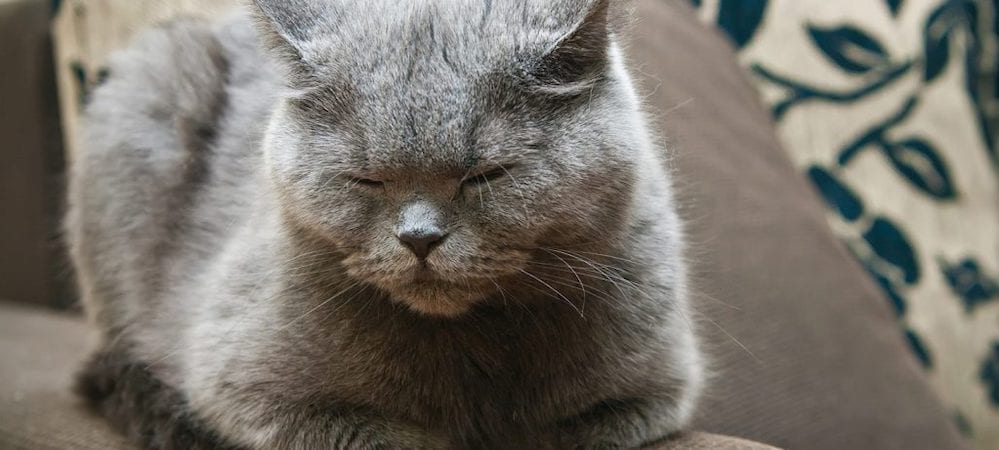How to Recognize Unhappy Cat Behavior

Unhappy cat behavior is sometimes obvious. Hissing, fleeing, cowering. But sometimes your cat might give more subtle signs that they are displeased or not feeling well. Understanding cat behavior is a crucial part of cat care. As a pet owner, it’s important to recognize these signs so you can learn how to know if your cat is depressed or otherwise perturbed. That way you can pick up on these cues and provide the best life possible for your four-legged friend. Read on to learn the telltale signs of an unhappy cat!
Cat Body Language
To pick up on more subtle displays of unhappy cat behavior, cat owners should familiarize themselves with cat body language. Your cat is likely upset if their ears are held back and their fur is standing on end. There’s also a special “cat tail language.” If your cat’s tail is tucked, instead of held high, your cat might be annoyed, angry or scared. And obviously, if your cat is limping, then there’s a chance they’re hurt, and you should take them to the vet as soon as possible.
Vocalizations
Even though cats don’t talk, it’s still important to listen to what they “say.” Vocal cues like low-pitched yowling are fairly obvious indicators, but many people don’t realize that purring can also be an unhappy cat behavior. Purring can sometimes be a sign that your cat is trying to comfort herself. Changes in your pet’s usual vocal behavior are generally the best indicators that something is wrong. If your normally loud cat is quiet, or your quiet kitty is loud, then it’s time to call your veterinarian.
Low Energy Levels
Lethargy is something that unhappy cats share with many unhappy humans. Obviously, cats sleep a lot, but cats that sleep even more than usual might be ill or depressed. Unusually low energy is a red flag unhappy cat behavior, suggesting a mental or physical problem.
Lack of Enthusiasm
Here’s another way to learn how to know if your cat is depressed: One trait sad cats have in common with depressed people is a lack of enthusiasm in their usual interests. Unhappy cats might demonstrate a loss of appetite or disinterest in their favorite toys. They may also suddenly stop giving you head-butts and other displays of affection.
Aggression
Just plain old hostility is another unhappy cat behavior. Some cats just prefer their independence, but if your cat is normally the social and affectionate type, then something might be up. Try giving your cat some space. Then if your cat continues to avoid interaction, it’s time to call the vet.
Deviations from the Daily Routine
Cats, like unruly toddlers, need routine! They tend to flourish when their daily activities follow a consistent pattern and timetable. Cats that all of a sudden deviate from their usual habits might be showing signs of distress. Has your cat stopped grooming themselves? Are they not using their litter box? Have they abandoned their usual sleeping spot? If you answered “Yes” to any of these questions, then something might be wrong. Deviations from usual routines are a common unhappy cat behavior.
Let the Vet Help Solve the Puzzle
We hope this gives you a better idea of how to know if your cat is depressed. If your cat’s behavior is showing signs of illness, chronic stress or depression, give your vet a call. They can recommend changes in your routine or medical treatment so your kitty will be happy and healthy. Also be sure to check out our article, “The Telltale Signs of a Happy Cat,” to know when your feline is feelin’ fine!



